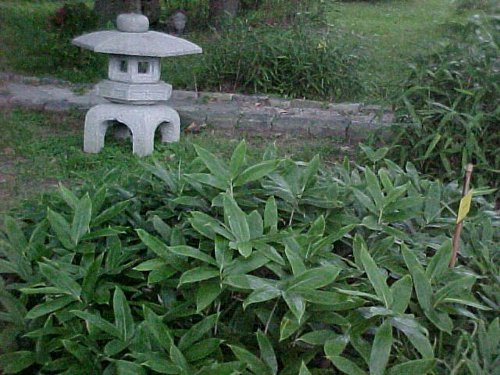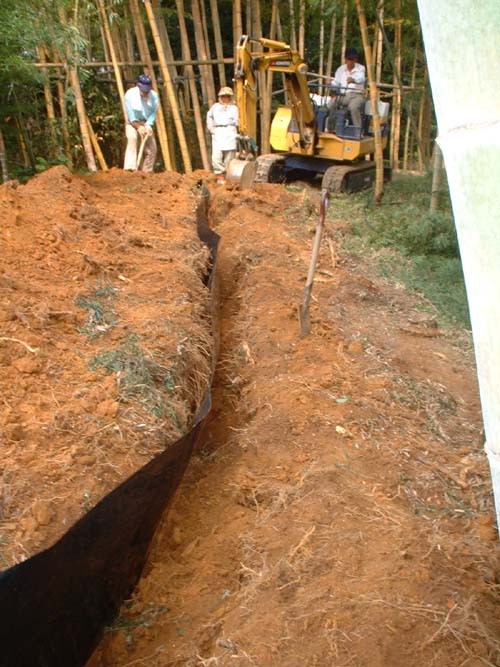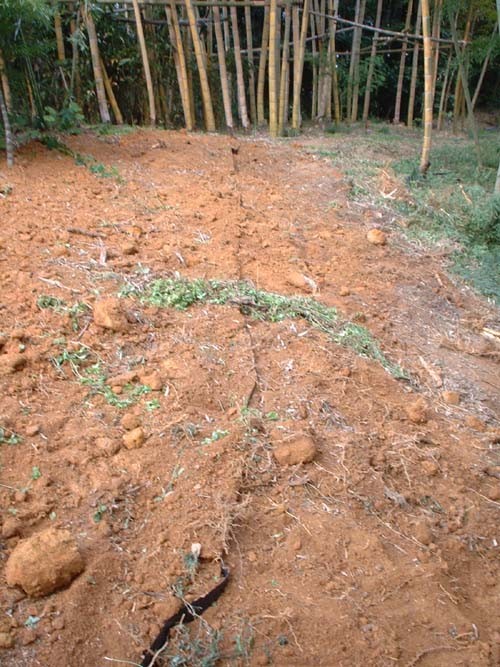 I’ve been growing bamboo since 1978 and have made many mistakes. Some species of bamboo doesn’t do well in Ohio, where I’m based, because they won’t tolerate the cold weather in winter. In some cases I’ve left the plants growing in my yard if only to show others what won’t do well in my climate.
I’ve been growing bamboo since 1978 and have made many mistakes. Some species of bamboo doesn’t do well in Ohio, where I’m based, because they won’t tolerate the cold weather in winter. In some cases I’ve left the plants growing in my yard if only to show others what won’t do well in my climate.
To control bamboo’s growth you need to do two things: contain it and maintain it. I’ll tell you how.

Every containment situation is different. In general, most bamboo will be sufficiently contained using a 24″ deep bamboo barrier. For additional protection or more aggressive species, a 36″ deep bamboo barrier is the best choice. These are the basics of how to use this product when using it to install bamboo:
- Determine the extent of the area to be given over to the bamboo. Dig a trench around the entire area line the trench with the barrier.
- Overlap the ends of the barrier by at least 12 inches, and by up to four feet if you have extra material available. Place the included sealant tape between the overlapped pieces, then backfill and tamp the soil tightly.
- Place the top edge of the barrier approximately 2 inches above the finished grade. This will deter overgrowth and make annual maintenance easier.
- Plant according to the standard bamboo nursery planting directions, paying attention to soil deficiencies, drainage and compaction.
It is best to maintain the bamboo during the fall when the rhizomes, referred to as “trip wires,” have grown outward throughout the late spring and summer and come to the surface and can go over the 2” lip of the barrier that’s above ground. The escaped rhizomes should pulled from the soil and put back inside the bamboo containment area to continue their journey. Cutting will not solve the problem since the severed portion will start to grow again outside the barrier.

After checking for escapees it’s time to cut out dead and dying canes. You can tell they are in decline or already dead by their color — they will be tan rather than green. Using a long handled lopper, cut the dying cane as close to the soil surface as possible.
By cutting off the branches and raising the canopy (this is called legging up) you accentuate the node and internodes, which will add beauty to the grove. You can cut off the branches as deep as you wish and they’ll never grow new branches again. This will lessen your screen effect, so go as deep as you wish.
The height of the bamboo can be controlled by cutting the culm at the top of the node, always leaving at least one branch with leaves. It will never grow any taller where you’ve cut. This maintenance should be done after it’s limber, which is usually in mid June. Any earlier and the bamboo is 85 percent water; the branches will simply snap off.

I often recommend that people plant two similar species of bamboo at once. By doing this you are covering your bases in case it goes to seed. This may not happen for 60 or 80 years, but it could also happen shortly in the future. The species which doesn’t seed will offer screening until the other recovers.
Bamboo is versatile and can add a lot to your site, but does require some love. By containing and maintaining your bamboo you can create a grove which is admired by you and your guests for its beauty — and perhaps as importantly, by your neighbors for its lack of spreading.
Jerry Burton is the man behind Burton’s Bamboo Garden. He has grown 50 kinds of bamboo on 22 acres of land (with a 7 acre lake!) since 1978. He runs educational sessions out of a large Haiku House surrounded by large bamboo groves and overlooking the lake. Exotic birds from Papua New Guinea (Cassowries), Argentina (Rheas), Australia (Emu), India (Peafowl), and China (Phoenix Chickens) also live on the grounds, along with large granite statuary from the Yangtze river area of China. All 27 years in the bamboo business have been spent learning, and he has a special knack with birds and plants. His philosophy is, “If they show up, sell them. If not, read a book because you’re at home anyway.” His son Zach will inherit the business.
Images: Jerry Burton






Roots grow to left on the north half of the world. So make your overlap standing with your back to the bamboos right barrier over the left barrier. On the south half make it in the opposite.